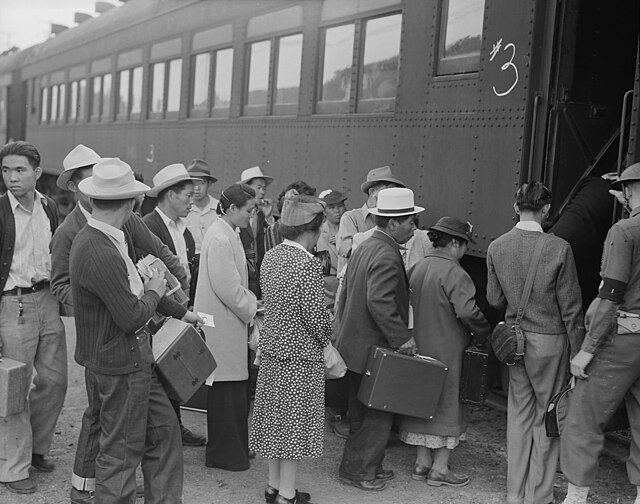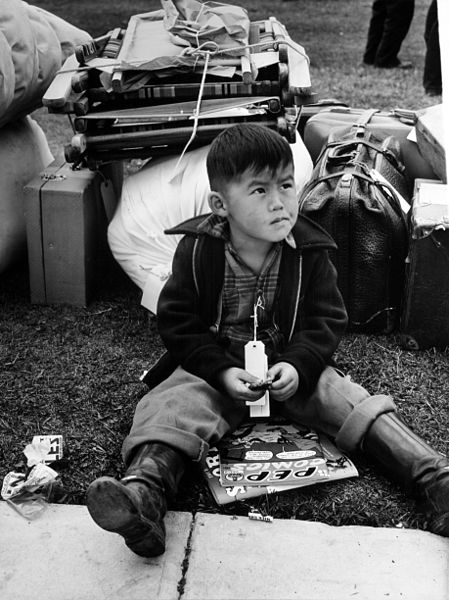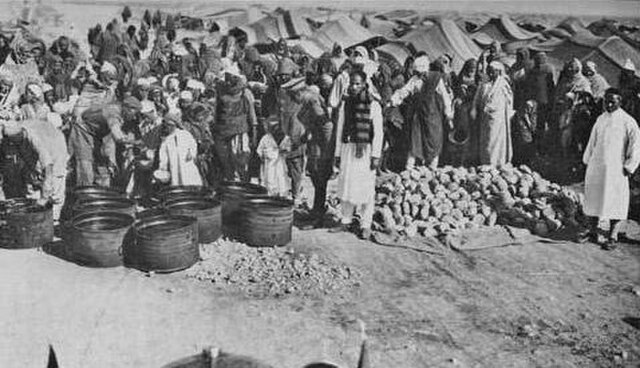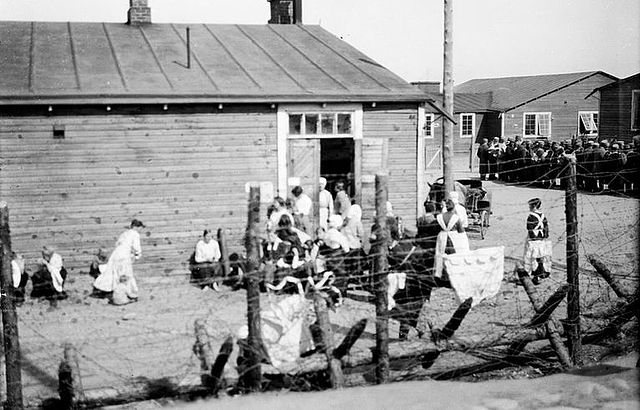Internment of Japanese Americans
During World War II, the United States forcibly relocated and incarcerated about 120,000 people of Japanese descent in ten concentration camps operated by the War Relocation Authority (WRA), mostly in the western interior of the country. Approximately two-thirds of the detainees were United States citizens. These actions were initiated by Executive Order 9066, issued by President Franklin D. Roosevelt on February 19, 1942, following Imperial Japan's attack on Pearl Harbor in December 1941. Before the war, about 127,000 Japanese Americans lived in the continental United States, of which about 112,000 lived on the West Coast. About 80,000 were Nisei and Sansei. The rest were Issei immigrants born in Japan, who were ineligible for citizenship. In Hawaii, where more than 150,000 Japanese Americans comprised more than one-third of the territory's population, only 1,200 to 1,800 were incarcerated.
Internment of Japanese Americans
Tatsuro Masuda, a Japanese American, unfurled this banner in Oakland, California the day after the Pearl Harbor attack. Dorothea Lange took this photograph in March 1942, just before his internment.
A child is "Tagged for evacuation", Salinas, California, May 1942. Photo by Russell Lee.
A Japanese American shop, Asahi Dye Works, closing. The notice on the front is a reference to Owens Valley being the first and one of the largest Japanese American detention centers.
Internment is the imprisonment of people, commonly in large groups, without charges or intent to file charges. The term is especially used for the confinement "of enemy citizens in wartime or of terrorism suspects". Thus, while it can simply mean imprisonment, it tends to refer to preventive confinement rather than confinement after having been convicted of some crime. Use of these terms is subject to debate and political sensitivities. The word internment is also occasionally used to describe a neutral country's practice of detaining belligerent armed forces and equipment on its territory during times of war, under the Hague Convention of 1907.
Boer women and children in a British concentration camp in South Africa (1899–1902)
Ten thousand inmates were kept in El Agheila, one of the Italian concentration camps in Libya during the Italian colonization of Libya.
Women at the Kalevankangas concentration camp of Tampere in 1918, several months after the Finnish Civil War
Jewish slave laborers at the Buchenwald concentration camp near Weimar photographed after their liberation by the Allies on 16 April 1945








